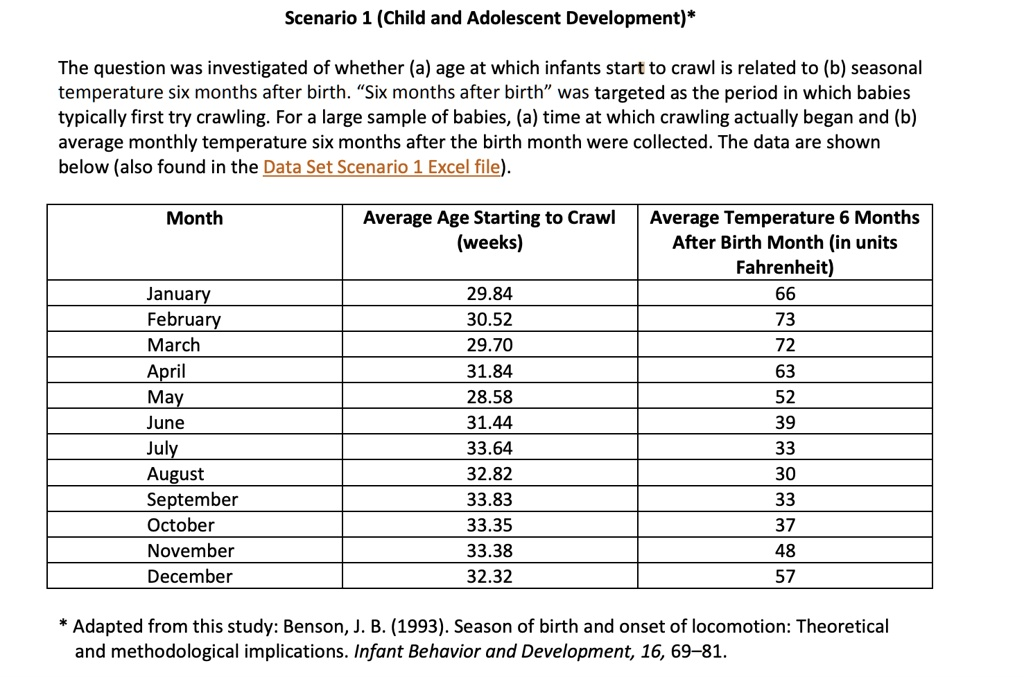Scenario 1 (Child and Adolescent Development)* The question was investigated of whether (a) age at which infants start to crawl is related to (b) seasonal temperature six months after birth: “Six months after birth” was targeted as the period in which babies typically first try crawling: For a large sample of babies, (a) time at which crawling actually began and (b) average monthly temperature six months after the birth month were collected: The data are shown below (also found in the Data Set Scenario 1 Excel file): Month Average Age Starting to Crawl Average Temperature 6 Months (weeks) After Birth Month (in units Fahrenheit) 29.84 66 30.52 73 29.70 72 31.84 63 28.58 52 31.44 39 33.64 33 32.82 80 33.83 33.35 37 33.38 48 32.32 57 January_ February March April Mav June July_ August September October November December Adapted from this study: Benson, J. B. (1993). Season of birth and onset of locomotion: Theoretical and methodological implications. Infant Behavior and Development; 16, 69-81_

The Correct Answer and Explanation is:
Based on the data provided in Scenario 1, a clear relationship exists between the age at which infants start to crawl and the seasonal temperature. The data indicates a negative correlation between these two variables. This means that as the average temperature increases around the time an infant is six months old, the average age for beginning to crawl decreases. Put simply, infants tend to start crawling earlier in warmer weather and later in colder weather.
This conclusion is strongly supported by the figures in the table. Consider infants born in winter months like January and February. Six months after their birth, they experience the warm summer months of July and August, with average temperatures of 66°F and 73°F, respectively. This group of infants began to crawl at a relatively early average age of around 29.8 to 30.5 weeks. In contrast, look at infants born during the summer, such as in July and August. They reached the six-month mark during the cold winter months of January and February, experiencing low average temperatures of 33°F and 30°F. This group demonstrated a later onset of crawling, with average ages of approximately 33.6 and 32.8 weeks.
A logical explanation for this trend involves environmental and behavioral factors. In warmer weather, infants are typically dressed in lighter, less restrictive clothing. This greater freedom of movement allows them to more easily practice and develop the motor skills required for crawling. They may also spend more time playing on the floor, providing more opportunities to explore movement. Conversely, in colder weather, infants are often bundled in bulky layers of clothing. These heavy clothes can physically restrict their ability to move their limbs freely, potentially delaying the acquisition of crawling skills. Therefore, the seasonal temperature appears to be a significant environmental factor influencing this important developmental milestone.
